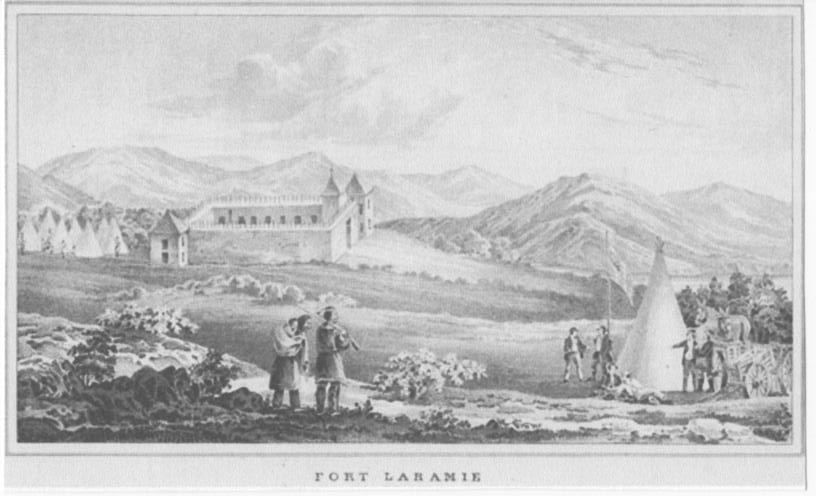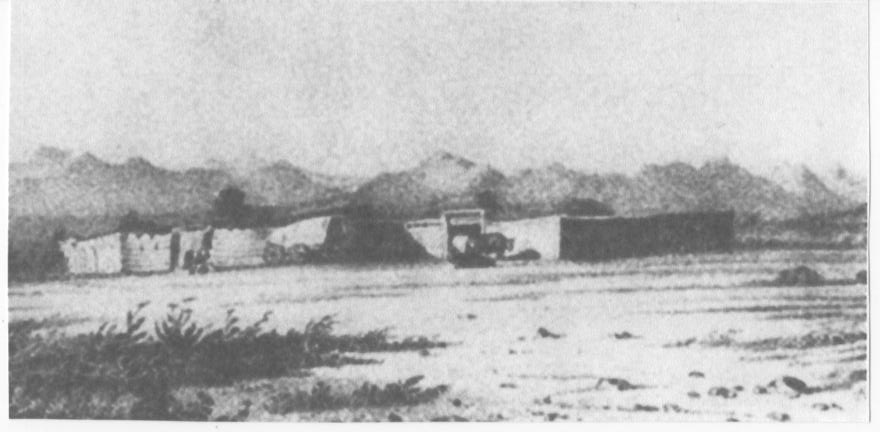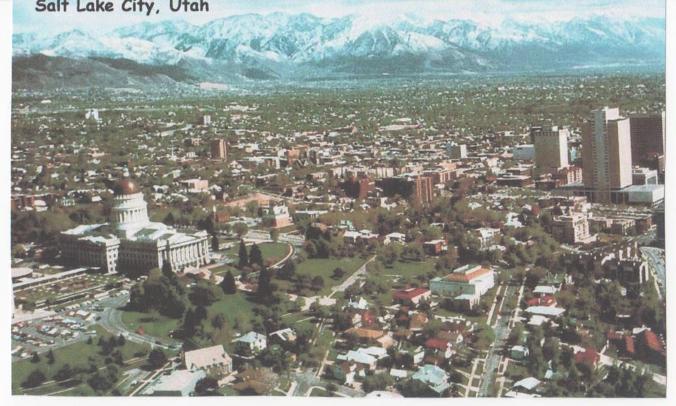The Temple in Nauvoo on which John Wardrope had worked during its construction was the target of an arson attack in 1848 destroying its interior then in 1850 the Temple was hit by a tornado which knocked down the north wall and damaged the east and south walls so badly that they were taken down. The remains of the structure were finally razed some years later.
In St. Louis John Wardrope became a member of the 27th Quorum of Seventies, a spiritual teacher, and as such attended the Latter Day Saints conference in St. Louis on the 31st January, 1847.
Although St. Louis was known at this time as a very tolerant city as regards the Mormons the discovery of gold in California had led to St. Louis being the jumping off point for prospectors heading to the gold fields from all over the world. The effect of all these immigrants crammed into St. Louis was to turn it into the equivalent of a frontier boom town with all the inherent dangers.
Other dangers experienced by John Wardrope and his family occurred in 1849 when a great fire broke out burning boats on the Mississippi River and destroying large parts of the city. The resultant devastation caused misery and hardship to thousands of residents. Also in 1849 a Cholera epidemic broke out in St. Louis and raged for most of the year killing thousands.
In 1852 John Wardrope and his family left St. Louis and travelled about 400 miles up the Missouri River to the settlement of Kanesville, Iowa, the site of the modern day town of Council Bluffs. This was the departure point for Mormon pioneers heading to the Valley of the Great Salt Lake beyond the Rocky Mountains. This was the place which had been designated by the Church leaders as the new Headquarters of the Mormon Church. John Wardrope and his family joined the Henry Bryant Manning Jolley Wagon Train in Kanesville and on the 14th June, 1852 crossed the Missouri River with them and camped overnight at an area known as Winter Quarters which is now the site of the city of Omaha, Nebraska. On the 15th June, 1852 the Wagon Train consisting of sixty four wagons set off on its journey of about 1,000 miles to the Valley of the Great Salt Lake. On the 1,000 mile trek they could expect to encounter choking dust, violent thunderstorms, blazing heat, quagmires of mud, contaminated water, hunger, sickness and possibly death. Apart from the elements, the dangers from wild animals and native American Indians was always present.

Their route took them across the Great Plains for hundreds of miles, following the Platte and North Platte Rivers on their northern side to Fort Laramie. Leaving Fort Laramie the Wagon Train basically followed the route of the Oregon Trail to Casper, Wyoming where they turned south-west, followed the Sweetwater River to a ridge known as the Continental Divide which they crossed at South Pass. From South Pass the route took them by the Green River to Fort Bridger.

FORT BRIDGER
From Fort Bridger to their final destination was something over 100 miles but the terrain was extremely difficult, possibly the worst part of the whole journey. It comprised of barely impassable canyons, rocky ridges and tree covered mountain slopes. The route they took through this inhospitable country eventually brought them to Echo Canyon which they passed through and eventually reached the big mountain overlooking the Great Salt Lake Valley. The Wagon Train reached the settlement in the Valley around the 15th September, 1852.
This was the end of a remarkable journey for John Wardrope - from a farm steading in the shadow of Duntilland Hill in the Parish of Shotts, Scotland - to a frontier settlement in the shadow of the Wasatch Mountains in the American Wild West.
The settlement where John Wardrope and his family now made their home and where he would live out the rest of his days eventually became modern day Salt Lake City the capital of the state of Utah and the world wide headquarters of the Mormon Church.

John Wardrope died on the 3rd April, 1890 in Salt Lake City, Utah, and he is buried in the City Cemetery, Salt Lake City, Utah.
His wife, Lucy McIntosh Wardrope died on the 27th May, 1880 in Salt Lake City, Utah and she is buried in the City Cemetery, Salt Lake City, Utah.
His daughter, Mary Wardrope died on the 7th January, 1915 in Beaver Beaver, Utah and she is buried in Mountain View Cemetery, Beaver Beaver, Utah.
His daughter, Emily Wardrope died on the 29th December, 1856 in Salt Lake City, Utah and she is buried in Salt Lake City Cemetery, Utah.







